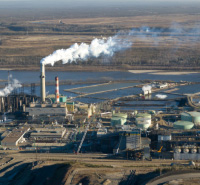I do not normally trumpet the oil and gas industries innovations but this seems like a good one.
http://www.dvn.com/CorpResp/initiatives/Pages/Valve%20Reductions.aspx#terms?disclaimer=yes
Tiny valve offers huge environmental impact
Big things do, indeed, often come in small packages.
A prime example of this axiom is the new valve that Devon has begun installing on its older wells. The device shows promise of revolutionizing the industry’s ability to reduce greenhouse gas emissions.
Roughly the size of an adult pinkie finger, the valve has the added benefit of eliminating waste, allowing Devon to sell more of the natural gas it produces.
Early results have been dramatic. Devon has replaced about 700 valves, all in Wyoming. Each device has reduced methane emissions by about 50 metric tons of carbon dioxide equivalent per valve. That figure is equal to taking nine cars off the road. Devon plans to replace about 2,300 more valves in Wyoming and 700 in Western Oklahoma and the Texas Panhandle.
In 2010, the American Carbon Registry approved the methodology associated with the new valve as the first carbon offset methodology for the oil and natural gas industry. That designation sets the stage for Devon to mitigate future costs of obtaining carbon credits should Congress pass cap-and-trade legislation.
Each valve costs about $300. That cost is recovered quickly – usually within three months – by capturing and selling the natural gas that was vented using the older technology.
“The device literally pays for itself before the invoice comes due,” said Darren Smith, a manager of Devon’s Environmental, Health and Safety department.
The new technology is designed specifically to replace outdated valves on older wells. Devon’s newer wells, including all of the company’s wells in the Barnett Shale, already feature low-bleed valves.
:}
Go there and read. More tomorrow.
:}






